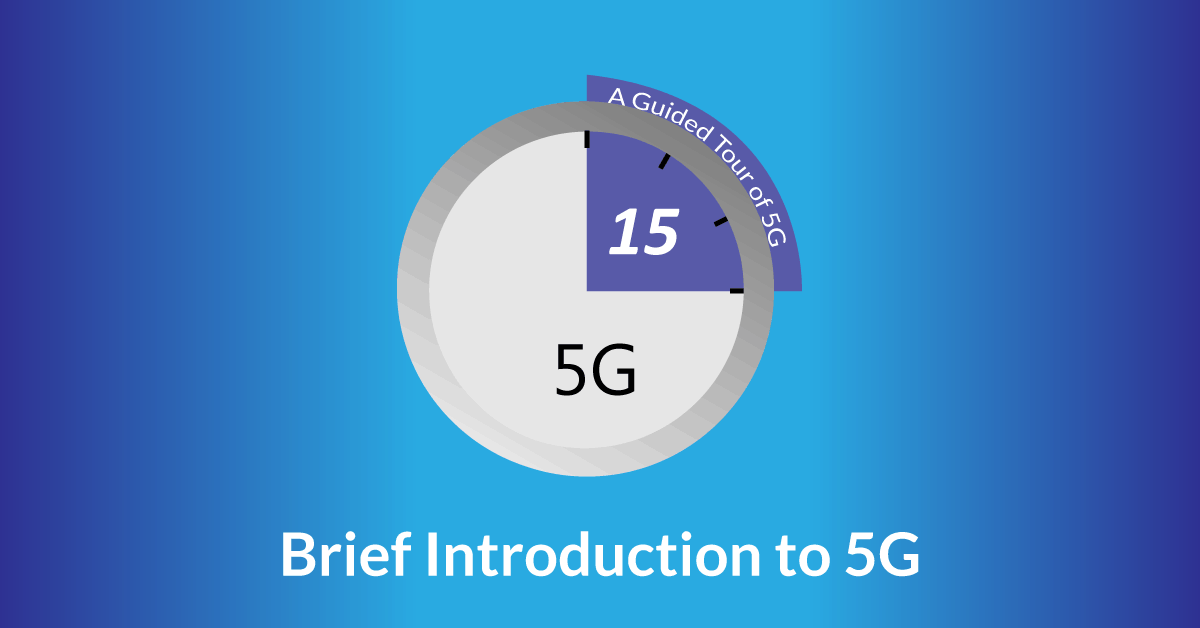We are starting a new video series under the Telecom category titled, “15 mins with 5G”. This is an attempt to demystify the jargons, concepts, and the technology landscape around the advent of 5G communication which is going to shape the future of cellular wireless communication over the next few years. It will be presented to you in a short, byte sized, video-based guided tours and leverage the information available form the web and the standards documents. In this first part, we will cover a brief introduction to 5G.
The video and the knowledge nuggets are provided by Imtiyaz Ali, a telecom versatilist specialized in wireless mobile networks. He is a technical author and has published research papers and white papers on 5G and related areas, across various telecom forums.
A Brief Introduction to 5G
This video will guide you through the web resources that specify the high-level definition & expectations for a 5G system, along with an overview of the specifications and standards bodies behind 5G. (Set the resolution settings to 720p for best video quality)
Knowledge Nuggets on 5G
What is 5G
(Refer video at 1:30 mins)
It is defined in ITU IMT-2020 requirements and 3GPP Release 15:
• ITU IMT-2020 standard – Theoretical peak download capacity of 20 gigabits
• 3GPP – Any system using NR (New Radio) software
Key Stakeholders:
• The International Telecommunications Union (ITU) – Final Standards – International Mobile Telecommunications (IMT)-2020.
• The 3GPP is the mobile industry standards – Submits proposed specifications to the ITU to be part of the IMT-2020 standard.
• Mobile operators and vendors – Participate in the 3GPP specification process for realizing interoperability between multiple vendors.
5G Standards
(Refer video at 3:50 mins)

Image courtesy, frankrayal.com
• Release 14 – Preliminary Study
• Release 15 – 5G Phase 1 – Basic features of 5G
• Release 16 – 5G Phase 2 – Additional Features on 5G
Release 14
Purpose of Release 14 is to conduct a preliminary study, establish technical specifications (TSs) and then to write technical reports (TRs) of 5G.
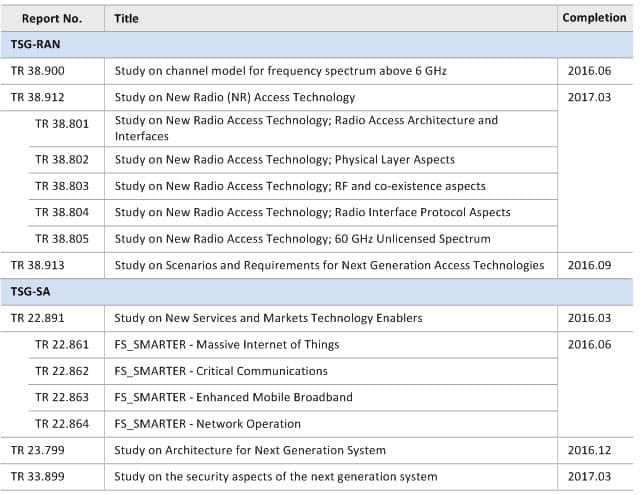
Release 15
The scope of NR will be standardized in Release 15
Additionally, a Non-Standalone (NSA) mode is proposed wherein 5G NR and LTE can work together with LTE as an anchor on the control plane. Standalone(SA) mode will continue to work independently.
ITU Definition of 5G network services
(Refer video at 5:55 mins)
1. enhanced Mobile Broadband (eMBB) – Handsets – Higher data rates and better coverage
2. Ultra-Reliable Low-Latency Communications (URLLC) – Applications and autonomous vehicles – on latency and reliability
3. Massive Machine Type Communications (MMTC) – Sensors – very large device density – very large device density
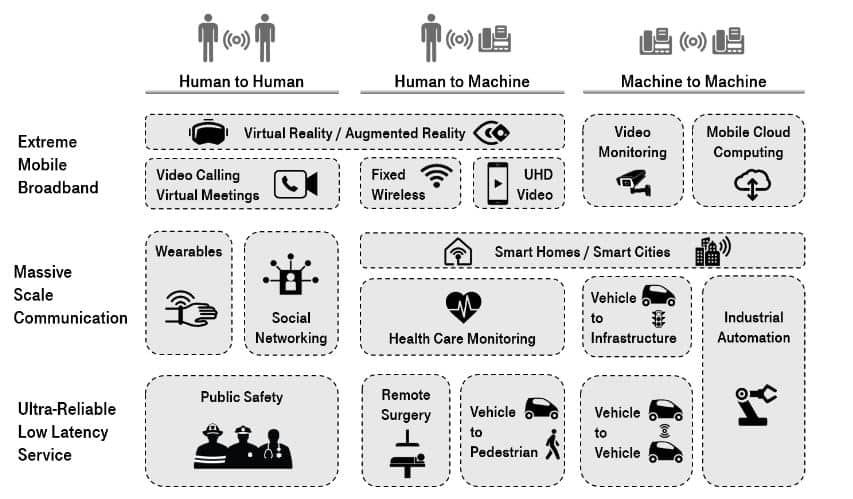
Image courtesy, 5gamericas.org
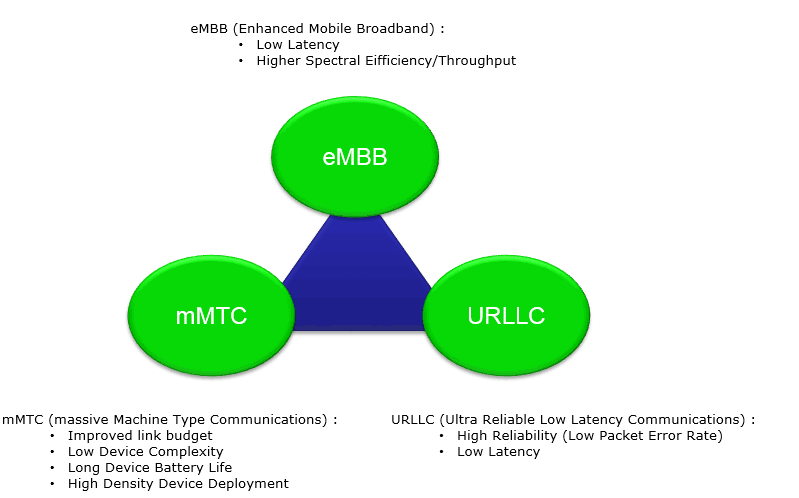
Image courtesy, ShareTechnote
enhanced Mobile Broadband (eMBB): These use cases generally have requirements for higher data rates and better coverage.
Ultra-Reliable Low-Latency Communications (URLLC): These use case have very strict requirements on latency and reliability and are used for mission-critical applications.
Massive Machine Type Communications (MMTC): These use cases generally have requirements to support a very large number of devices in a small area, therefore, very large device density. Typical applications fall under IoT based deployments.
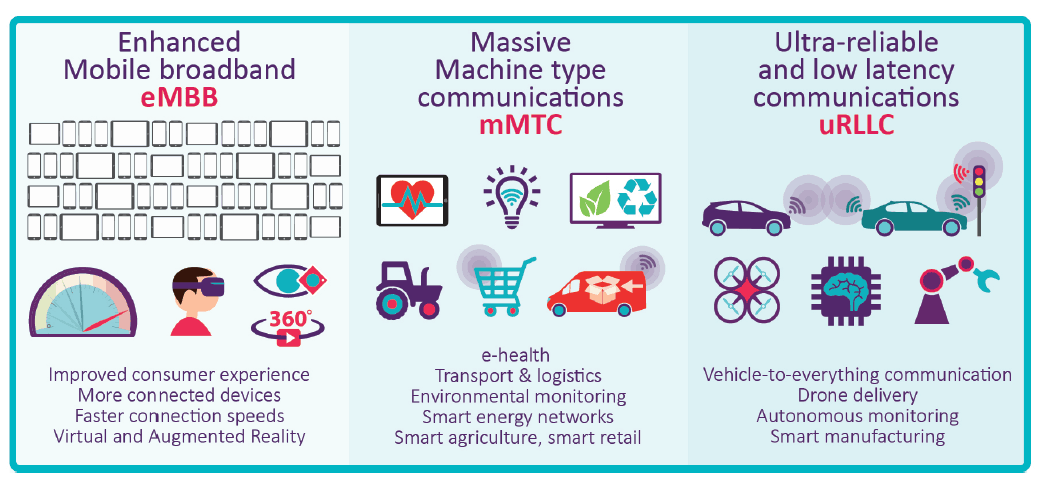
5G Spectrum
(Refer video at 10:25 mins)
Refer Wikipedia on mmWave (millimeter wave) bands
1 Frequency Range 1 (< 6 GHz) : Channel bandwidth – 100 MHz, Maximum modulation – 256-QAM
No significant throughput improvements relative to LTE in the sub-6 GHz band
2 Frequency Range 2 (24–86 GHz) : Channel bandwidth – 400MHZ(Two Channel Aggregation)
PHY Capability – 40 Gbit/s
Capabilities of 5G as per IMT-2020
(Refer video at 9:05 mins)

References
Wikipedia – https://en.wikipedia.org/wiki/5G
Netmanias – https://www.netmanias.com/en/?m=view&id=reports&no=11609
ShareTechnote – http://www.sharetechnote.com/html/5G/5G_Definition.html#Formal_Definition

